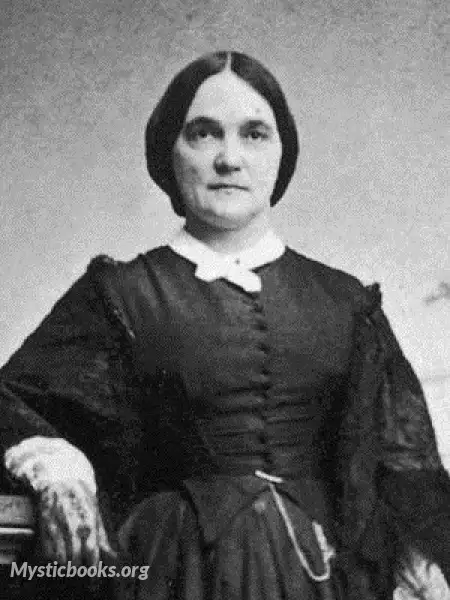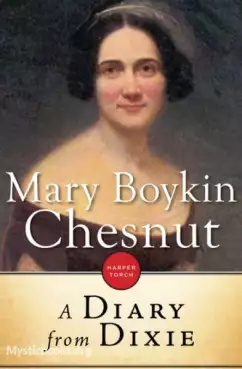
Timeline
Title
Country/Nationality
Mary Boykin Chesnut
Mary Boykin Chesnut was an American author noted for a book published as her Civil War diary, a "vivid picture of a society in the throes of its life-and-death struggle." She described the war from within her upper-class circles of Southern slaveowner society, but encompassed all classes in her book. She was married to a lawyer who served as a United States senator and Confederate officer. Chesnut worked toward a final form of her book in 1881–1884, based on her extensive diary written during the war years. It was published in 1905, 19 years after her death. New versions were published after her papers were discovered, in 1949 by the novelist Ben Ames Williams, and in 1981 by the historian C. Vann Woodward, whose annotated edition of the diary, Mary Chesnut's Civil War (1981), won the Pulitzer Prize for History in 1982. Literary critics have praised Chesnut's diary—the influential writer Edmund Wilson termed it "a work of art" and a "masterpiece" of the genre—as the most important work by a Confederate author.
Mary Chesnut was born on March 31, 1823, on her maternal grandparents' plantation, called Mount Pleasant, near Stateburg, South Carolina, in the High Hills of Santee. Her parents were Stephen Decatur Miller (1788–1838), who had served as a U.S. Representative, and Mary Boykin (1804–85). In 1829 her father was elected governor of South Carolina and in 1831 as a U.S. senator. The family then lived in Charleston. Mary was the oldest of four children; she had a younger brother Stephen and two sisters: Catherine and Sarah Amelia.
Mary Boykin Chesnut began her diary on February 18, 1861, and ended it on June 26, 1865. She would write at the outset: “This journal is intended to be entirely objective. My subjective days are over.” Chesnut was an eyewitness to many historic events as she accompanied her husband to significant sites of the Civil War. Among them were Montgomery, Alabama, and Richmond, Virginia, where the Provisional Congress of the Confederate States of America convened; Charleston, where she was among witnesses of the first shots of the Civil War; Columbia, South Carolina, where her husband served as the Chief of the Department of the Military of South Carolina and brigadier general in command of South Carolina reserve forces; and again Richmond, where her husband served as an aide to the president. At times, they also lived with his parents at their house at Mulberry Plantation near Camden. While the property was relatively isolated in thousands of acres of plantation and woodland, they entertained many visitors.
Chesnut was aware of the historical importance of what she witnessed. The diary was filled with the cycle of changing fortunes of the South during the Civil War. Chesnut edited it and wrote new drafts in 1881–1884 for publication, and retained the sense of events unfolding without foreknowledge. She had the sense of the South's living through its time on a world stage, and she captured the growing difficulties of all classes of the Confederacy as they faced defeat at the end of the war. Politically aware, Chesnut analyzed and portrayed the various classes of the South throughout the war, providing a detailed view of Southern society and especially of the mixed roles of men and women. She was forthright about the complex and fraught situations related to slavery, particularly the abuses of women's sexuality and the power exercised by white men. For instance, Chesnut discussed the problem of white slaveowners' fathering mixed-race children with enslaved women within their extended households.
Examination of Mary Chesnut's papers has revealed the history of her development as a writer and of her work on the diary as a book. Before working to revise her diary as a book in the 1880s, Chesnut wrote a translation of French poetry, essays, and a family history. She also wrote three full novels that she never published: The Captain and the Colonel, completed about 1875; and Two Years of My Life, finished about the same time. She finished most of a draft of a third long novel, called Manassas. Elisabeth Muhlenfeld, who edited the first two novels for publication by the University of Virginia Press in 2002 and wrote a biography of Chesnut, described them as her writing "apprenticeship."
Chesnut used her diary and notes to work toward a final version in 1881–1884. Based on her drafts, historians do not believe she was finished with her work. Because Chesnut had no children, before her death she gave her diary to her closest friend, Isabella D. Martin, and urged her to have it published. The diary was first published in 1905 as a heavily edited and abridged edition. Williams' 1949 version was described as more readable, but sacrificing historical reliability and many of Chesnut's literary references. The 1981 version by C. Vann Woodward retained more of her original work, provides an overview of her life and society in the introduction, and was annotated to identify fully the large cast of characters, places and events.
Books by Mary Boykin Chesnut

A Diary from Dixie
Mary Boykin Miller Chesnut, a well-educated South Carolina woman who was married to a Confederate general, kept extensive journals during the Civil War. Mrs. Chesnut moved in elite circles of Southern society and had a keen interest in politics. Her...